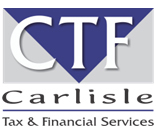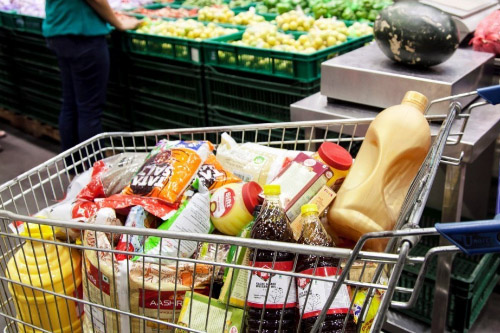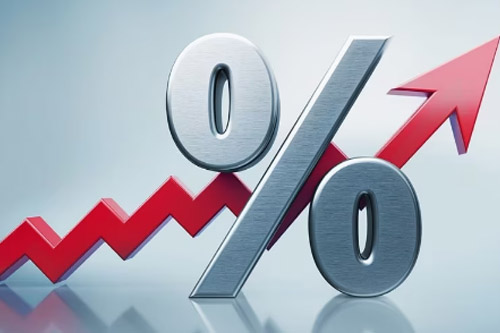Some foodstuffs have nearly doubled in price since 2020 – and it’s getting very expensive to own a cat.
Food items in the inflation basket now cost 40% more than they did five years ago. Image: Udit Kulshrestha/Bloomberg
Prices creep up a little bit every month. Small increases of only a fraction of a percent seem innocent. An increase of only 0.2% per month or 4% and 5% compared to a year ago does not sound too much to worry about.
As such, headline inflation was 0.6% in September 2023 and prices of all goods and services increased by 5.4% over the past year, according to the latest consumer price index data from Statistics SA.
However, anyone who gets to push a shopping trolley down a supermarket aisle will have noticed that the prices of food and other grocery items have increased significantly compared to what we were paying not too long ago.
A jar of good instant coffee has increased from less than R80 to R129 in what seems like a couple of months.
Stats SA noted in its recent consumer price index report that food prices increased faster than the overall inflation rate of 5.4% in September 2023. Prices of food and non-alcoholic drinks increased by 8.1% compared to September 2022.
Vegetables are more than 15% more expensive, while prices of milk, eggs and cheese have increased by nearly 9%. Sugar, sweets and desserts are nearly 18% more expensive than a year ago.
One needs to look at food prices over a slightly longer term to understand the reality of expensive food and consumers’ struggle to afford household groceries.
Three years
Previous consumer price index reports show that food inflation suddenly increased during the last three years, from more subdued levels of around 5%. The most recent 8.1% increase in food prices comes on top of the increase of 11.9% in the year to September 2022, while food inflation was running at 11.4% in the year to September 2021.
The compounding effect of these high increases means that food is now nearly 35% more expensive than three years ago. A lot of products have increased by more than 50% over the period and a few have nearly doubled in price, according to the list of items surveyed by Stats SA.
The list of items that Stats SA surveys every month is available as an addendum to the monthly consumer price index report and includes prices for more than 200 items going back 15 years.
| Largest price increases over three years (R) | ||||
| Product | Size | Sep 2020 | Sep 2023 | Change |
| Instant noodles (e.g. 2-minute noodles) | 73g | 5.80 | 9.08 | 57% |
| Margarine spread (in a tub) | 500g | 24.80 | 38.08 | 54% |
| Ice cream | 1.8 litre | 49.79 | 76.12 | 53% |
| Broccoli | Each | 19.43 | 29.50 | 52% |
| Sunflower oil (incl canola oil) | 750ml | 23.84 | 35.98 | 51% |
| Baby food – milk formula | 900g | 143.09 | 215.41 | 51% |
| Ham | 500g | 36.36 | 54.60 | 50% |
| Instant coffee | 250g | 37.60 | 56.30 | 50% |
| Biltong | Per kg | 261.35 | 380.90 | 46% |
| Frozen potato chips | 1kg | 33.86 | 49.31 | 46% |
| Brown sugar | 1 kg | 19.62 | 28.42 | 45% |
| Cake flour | 2.5 kg | 29.95 | 42.73 | 43% |
| Chocolate slab | 80g | 14.65 | 20.70 | 41% |
| Pumpkin | Per kg | 14.07 | 19.70 | 40% |
| Pasta (excl spaghetti, macaroni) | 500g | 18.24 | 25.53 | 40% |
| White sugar | 2.5kg | 43.62 | 61.05 | 40% |
| Hake – frozen | 400g | 63.79 | 89.24 | 40% |
| Potatoes | Per kg | 13.52 | 18.90 | 40% |
| Ground coffee or coffee beans | 250g | 69.91 | 96.93 | 39% |
| Ready-mix flour | 1kg | 28.35 | 39.02 | 38% |
Source: Compiled from Stats SA data
It is remarkable that prices of personal care items increased sharply. Hair relaxers nearly doubled in price, while toothpaste costs 55% more than three years ago. A toothbrush is also more expensive (63%) and soap powder and toilet paper are 50% more expensive.
Some food items increased by massive percentages, such as onions (79%), coffee creamer (58%), instant noodles (57%) and broccoli (52%).
And it is way more expensive to keep a cat than a few years ago. The price of cat food pellets increased by 63% to an average of R90 per 1.75kg. Dog owners are somewhat better off as dog pellets increased by only 47% over the last three years – and dogs are less fussy than cats at their food bowls.
Food
While the latest inflation report shows that the prices of some food categories increased sharply over the past year, it noted smaller increases in some.
Vegetables increased by 15.3%, but meat by only 3.8%. The price of fats and cooking oil decreased slightly after huge increases previously.
However, cooking oil is still 50% more expensive than it was three years ago, while meat is between 20% and 30% more expensive, depending on the type of meat and the specific cut.
| Biggest price increases among food items (R) | ||||
| Product | Size | Sep 2020 | Sep 2023 | Change |
| Corned beef | 300g | 26.19 | 35.90 | 37% |
| Beans – dried | 500g | 21.52 | 29.28 | 36% |
| Condensed milk | 385g | 24.95 | 33.93 | 36% |
| Cauliflower | Each | 20.98 | 28.29 | 35% |
| Cheese spread | 250g | 36.22 | 48.37 | 34% |
| Mayonnaise | 750g | 31.09 | 41.41 | 33% |
| Salad dressing | 340ml | 27.14 | 35.88 | 32% |
| Maize-based food drink (e.g. mageu ) | 1 Litre | 14.86 | 19.61 | 32% |
| Atchar | 400g | 33.59 | 44.23 | 32% |
| Feta cheese | 400g | 47.70 | 62.72 | 31% |
| Spaghetti | 500g | 14.99 | 19.68 | 31% |
| Fish fingers – frozen | 400g | 48.62 | 63.72 | 31% |
| Bread flour | 2.5kg | 35.73 | 46.61 | 30% |
| Fish (excl tuna) – tinned | 400g | 20.13 | 26.23 | 30% |
| Peanut butter | 400g | 31.68 | 41.11 | 30% |
| Chicken portions frozen – non IQF | Per kg | 49.19 | 63.82 | 30% |
| Mixed vegetables – tinned | 410g | 17.26 | 22.38 | 30% |
| IQF chicken portions | 2kg | 71.42 | 92.16 | 29% |
| Gouda cheese | 900g | 121.22 | 156.42 | 29% |
| Baby food – cereal | 250g | 29.95 | 38.59 | 29% |
| Apples | Per kg | 15.60 | 20.08 | 29% |
| Beef offal | Per kg | 38.09 | 48.91 | 28% |
| Polony | 1kg | 42.50 | 54.43 | 28% |
| Low fat milk – long life | 1 litre | 15.29 | 19.57 | 28% |
| Beef brisket | Per kg | 84.84 | 108.13 | 27% |
| Pork ribs | Per kg | 78.70 | 99.77 | 27% |
| Chutney | 470g | 31.72 | 40.01 | 26% |
| Low fat milk – fresh | 2 litre | 28.75 | 36.25 | 26% |
| Hot cereals (incl instant porridge) | 1kg | 25.53 | 31.96 | 25% |
| Full cream milk – long life | 1 litre | 15.71 | 19.59 | 25% |
| Rusks | 500g | 39.30 | 49.00 | 25% |
| Potato crisps | 125g | 15.39 | 19.02 | 24% |
| Cheddar cheese | 900g | 121.34 | 149.95 | 24% |
| Macaroni | 500g | 15.01 | 18.53 | 23% |
| Brick margarine | 500g | 22.49 | 27.65 | 23% |
| Bacon | 200g | 33.28 | 40.87 | 23% |
| Loaf of brown bread | 700g | 13.84 | 16.96 | 23% |
| Beef T-bone | Per kg | 103.59 | 126.90 | 23% |
| Frozen vegetables | 1kg | 38.13 | 46.68 | 22% |
| Loaf of white bread | 700g | 15.03 | 18.39 | 22% |
| Custard – prepared | 1 litre | 27.58 | 33.62 | 22% |
| Mutton/lamb neck | Per kg | 121.23 | 147.44 | 22% |
| Sausage | Per kg | 80.97 | 98.39 | 22% |
| Sweet biscuits | 200g | 20.46 | 24.83 | 21% |
| Beef chuck | Per kg | 86.85 | 105.05 | 21% |
| Whiskey | 750ml | 200.60 | 242.28 | 21% |
| Flavoured yoghurt | 1kg | 33.35 | 40.26 | 21% |
| Red wine | 750ml | 63.74 | 76.93 | 21% |
| Chocolate bar | Each | 11.21 | 13.49 | 20% |
| Fresh cream | 250ml | 25.54 | 30.69 | 20% |
| Mutton/lamb ofal | Per kg | 51.07 | 61.36 | 20% |
| Cereals | 500g | 39.41 | 47.28 | 20% |
| Tuna – tinned | 170g | 20.41 | 24.32 | 19% |
| Full cream milk – fresh | 2 litre | 29.45 | 35.05 | 19% |
| Plain yoghurt | 1kg | 34.08 | 40.55 | 19% |
| Peanuts | 150g | 21.61 | 25.43 | 18% |
| Pears | Per kg | 19.70 | 23.02 | 17% |
| Ice cream | 2 litre | 62.90 | 73.43 | 17% |
| Pork fillet | Per kg | 93.12 | 108.28 | 16% |
| Bananas | Per kg | 16.45 | 19.10 | 16% |
| Bread rolls | For 6 | 15.69 | 18.06 | 15% |
| Beef extract | 120g | 14.19 | 16.33 | 15% |
| Cucumber | Each | 15.19 | 17.08 | 12% |
| Cabbage | Each | 17.98 | 20.08 | 12% |
| Eggs | For 18 | 46.72 | 51.91 | 11% |
| Baked beans – tinned | 410g | 13.89 | 15.39 | 11% |
| Baking powder | 200g | 28.61 | 31.63 | 11% |
| Paw paw | Each | 19.85 | 21.90 | 10% |
| Carrots | 1kg | 13.28 | 14.57 | 10% |
| Mutton/lamb loin chop | Per kg | 176.81 | 193.72 | 10% |
| Stewing mutton/lamb | Per kg | 127.86 | 139.98 | 9% |
| Mushrooms | 250g | 27.94 | 30.44 | 9% |
| Rice | 2kg | 39.64 | 42.49 | 7% |
| Beef mince | Per kg | 96.34 | 103.07 | 7% |
| Lettuce | Each | 15.74 | 16.67 | 6% |
| Mutton/lamb rib chop | Per kg | 182.61 | 191.44 | 5% |
| Beer | 330ml | 15.25 | 15.88 | 4% |
| Chicken portions – fresh | Per kg | 75.72 | 78.49 | 4% |
| Rooibos tea | 200g | 45.18 | 46.70 | 3% |
| Prepared salads | Per kg | 69.32 | 71.05 | 2% |
| Whole chicken – fresh | Per kg | 60.68 | 61.66 | 2% |
| Beef sirloin | Per kg | 161.27 | 163.10 | 1% |
| Beef fillet | Per kg | 248.15 | 248.28 | 0% |
| Green/red/yellow pepper | Per kg | 53.21 | 53.23 | 0% |
| Beef rump steak | Per kg | 160.49 | 158.66 | -1% |
| Mutton/lamb leg | Per kg | 167.45 | 164.92 | -2% |
| Eggs | For 6 | 20.95 | 20.51 | -2% |
| Sweet potatoes | Per kg | 22.09 | 21.51 | -3% |
| Pork chops | Per kg | 93.72 | 90.01 | -4% |
| Beetroot | 1kg | 14.61 | 13.93 | -5% |
| Stewing beef | Per kg | 102.97 | 95.54 | -7% |
| Oranges | Per kg | 19.12 | 17.17 | -10% |
| Avocados | Each | 11.82 | 10.40 | -12% |
| Rice | 1kg | 32.09 | 26.89 | -16% |
| Pineapple | Each | 18.47 | 15.25 | -17% |
Source: Compiled from Stats SA data
The prices of some food items are at the same levels as three years ago, according to the Stats SA data. This includes beef fillet (R248 per kg), whole fresh chicken (R62 per kg) and, apparently, a tray of six eggs (R21).
The last figure looks suspect, as Stats SA’s survey recorded an increase of 11% in the price of a tray of 18 eggs over the same period.
The prices of chicken and eggs are currently increasing due to concern over shortages.
Stats SA noted in a discussion of the inflation rate that its data collectors had already noted some upward movement in the prices of poultry-related products during September as producers started to cull birds in response to the outbreak of avian flu.
“Examples include fresh whole chicken (up 2.2%), fresh chicken portions (up 2.2%) and frozen chicken portions (up 1.9%). Egg prices registered a monthly increase of 0.3% following a decline of 0.4% in August,” it says.
“Prices for poultry related products deserve a close watch in the coming months to gauge the impact of the avian flu outbreak. The October CPI, due for release on 22 November, will provide the next update.”
Where the pressures are coming from
Koketso Mano, senior economist at FNB, said in a response to the latest inflation figures that “consumer inflation lifts off on fuel price pressures”, pointing to the steep increase in fuel prices for September.
He also noted the high level of food inflation. “Food and non-alcoholic beverages inflation tilted upwards to 8.1% year-on-year, from 8.0% previously. Meat, beverages and cereals explained 75% of the monthly pressure, and only vegetables contributed negatively,” he says.
He expects inflation to increase further. “Headline inflation will lift to 5.6% in October. Headline inflation will experience further upward monthly pressure from fuel prices following the over R1 per litre lift in petrol and near R2 per litre lift in diesel prices.
“Furthermore, the avian flu outbreak that has primarily affected the supply of eggs and will likely spill over to chicken should keep food inflation elevated. Unfortunately, an undervalued rand should continue to be a source of upward pressure to broader imported inflation,” says Mano.
Five years
Looking at food prices over five years is even more depressing, unless your salary increased by more than the general inflation rate since your September 2018 pay cheque.
The overall inflation rate was only 3% to 4% in the first few years, but accelerated to 5% and then to 7.5% by 2022. Thus, the cost of the total consumer basket increased by 28% since 2018.
Food inflation was higher than the general inflation rate in four of the five years with the result that the food items in the inflation basket cost 40% more than in 2018.
A last look at Stats SA’s price data shows that a litre of milk cost R14.70 in 2018, T-bone steak sold for R103 per kg and an average red wine was R65 per bottle. Cat food was just over R55 a bag.
Artcile: Moneyweb





